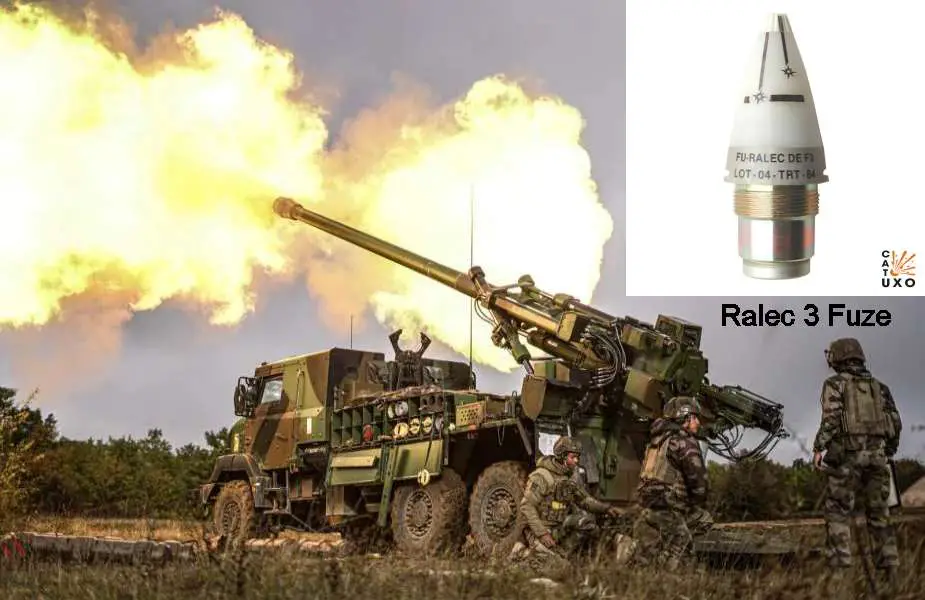Breaking news
France enhances Ukraine's artillery effectiveness with delivery of fragmentation bombs.
On March 13, 2024, French Minister of the Armed Forces, Sébastien Lecornu, announced that France would be doubling its deliveries of 155 mm shells to Ukraine, now reaching 2,000 units per month. These munitions might include the RALEC F3 proximity fuzes, advanced devices that have the potential to transform how artillery shells are used on the battlefield. This would mark the second delivery of the Ralec F3 Proximity Fuze to Ukraine.
Follow Army Recognition on Google News at this link

French RALEC F3 Proximity Fuze mounted on NATO 155mm shell (Picture source: France MoD)
Developed in France, the RALEC F3 represents a significant advancement in artillery fuze technology. These proximity fuzes, used with standard 155 mm HE NATO munitions, are designed to detonate a shell in the air, creating a cloud of fragments directed towards the target. This capability provides a major tactical advantage by increasing the effectiveness of strikes against enemy forces. These devices, weighing 626 grams and measuring 151 mm in length by 61 mm in diameter, are armed by the recoil and centrifugal force during firing. An electrolyte-containing ampoule breaks, activating a capacitor which, along with centrifugal force, prepares the firing circuit and aligns the rotor for detonation.
The introduction of these proximity fuzes into the Ukrainian arsenal significantly improves the precision and effectiveness of artillery strikes. Compatible with cannons such as the French Caesar or the German Pzh 2000, these shells can reach targets up to 40 kilometers away, playing a crucial role in the current conflict.
Proximity fuzes significantly enhance the destructive power of artillery shells by enabling an aerial explosion precisely above the target. This technology ensures that the shockwave and shrapnel are optimally distributed, thus maximizing damage inflicted on the target. Unlike traditional shells that explode upon contact with the ground and whose effectiveness can be diminished by obstacles or fortifications, proximity fuzes create an extensive destruction zone, increasing the likelihood of hitting and neutralizing even hidden or moving targets.
This detonation method boosts the destructive efficiency of the munitions, as it allows covering a larger area with a single shell, making proximity fuzes particularly formidable against infantry formations, light equipment, and unarmored vehicles. The psychological impact on enemy troops, knowing they can be targeted with deadly accuracy even while in cover, further enhances the effectiveness of these weapons. In summary, proximity fuzes represent a leap forward in artillery warfare, offering unprecedented destructive power on the battlefield.
France's commitment to increasing its shell deliveries underscores the urgency of supporting Ukraine in its rapid consumption of munitions. The European Union has allocated two billion euros to supply Ukraine with one million shells. Nexter, the French producer of the shells, plans to triple its annual production to 150,000 shells by 2025.
Furthermore, on March 12, 2024, Prime Minister Gabriel Attal outlined France's upcoming contributions to Ukraine. These include the supply of 150 drones, 100 loitering munitions, a total of eighteen CAESAR 155mm wheeled self-propelled howitzers—with an initial delivery of six and a further twelve to be financed by France—and the production of 3,000 artillery shells to support Ukraine's military efforts.























